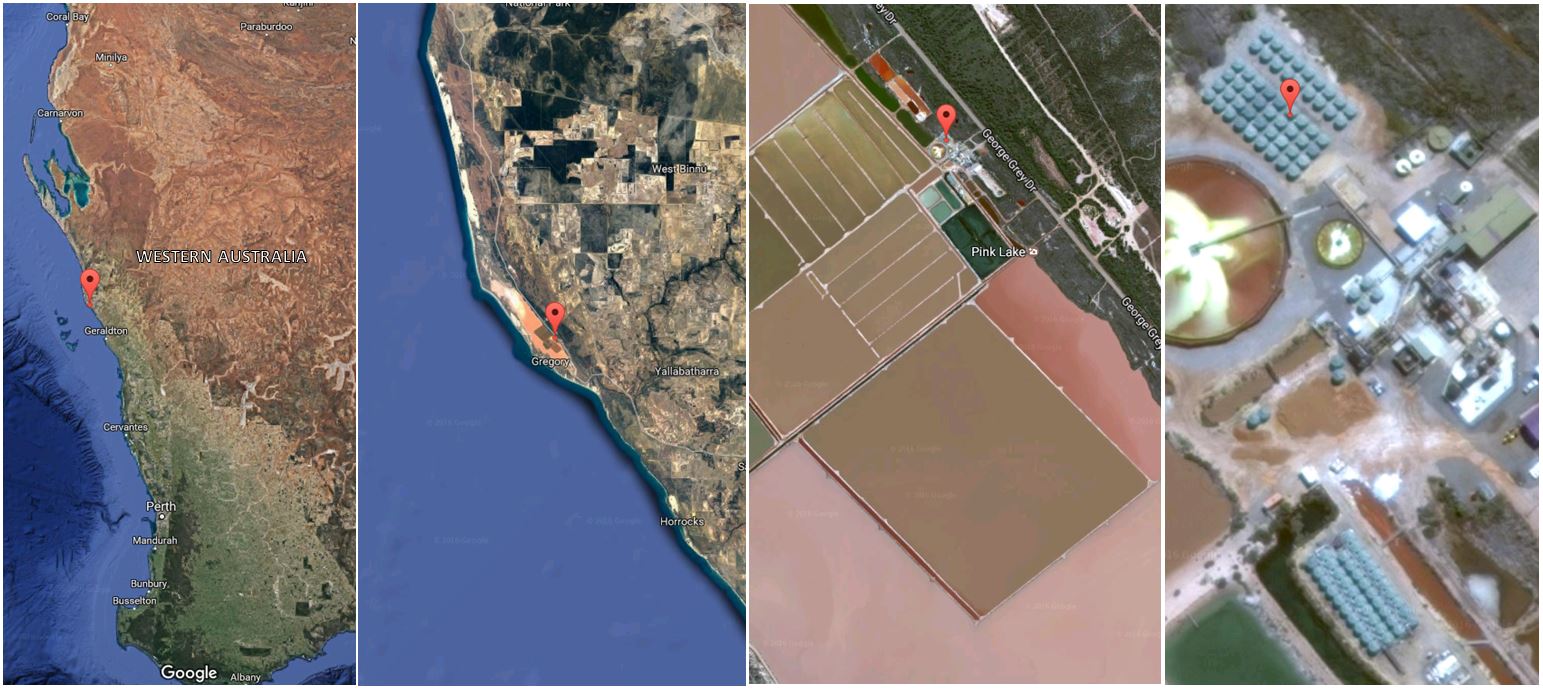They’re actually also called brine shrimp or artemia. It happens to be that these artemia can be a serious pest when you are producing the naturally occurring red pigment, beta-carotene which is used as a dietary supplement, food colouring, Vitamin A and in cosmetics.
Pink Lake

Such is the case at Hutt Lagoon (near Port Gregory around 100 kilometres north of Geraldton) which is a Pink Lake that you can see on Google Maps. The red or pink hue comes from the presence of the carotenoid-producing micro-algae.
Amazingly this pink lake is one of the world’s biggest producers of the naturally occurring red pigment, beta-carotene. These artemia multiply and feed on this micro-algae from which beta-carotene are extracted.
Artemia or brine-shrimp farm

Photo Source
It was back in the spring of 2008 when Coerco (formerly Rapid Plastics WA) supplied BASF (formerly Cognis Australia) with 85 of these 32,000ltr poly tanks as part of the solution to saving instead of killing off these artemia. This advanced design artemia or brine-shrimp farm was opened in 2010 at Hutt Lagoon in Western Australia.
The 32,000ltr poly tanks you see facilitated a closed production tank system for the artemia due to strict biosecurity regulations. Special filtration and harvesting systems for the artemia were also developed into these 32,000ltr tanks. The harvesting system allows the harvest of a full tank in minutes.
Artemia…what are they used for?

These tiny artemia or brine shrimp are a major source of food for most farmed fish and prawns. With these artemia feeding on the highly nutritious micro-algae it means that they are of the highest grade quality. The production of these artemia has helped overcome the problem of global shortages of artemia, which can leave Australian producers with no alternative sources of fish food.
Poly Tanks in Aquaculture
So what you see on google maps is a micro-algae farm working in tandem with a sea monkey or artemia farm turning them from a potential threat into an opportunity! This cutting-edge artemia aquaculture project won the 2010 Premier’s Award for the Developing the Economy category. The artemia utilise the algae biomass and the artemia waste returns as natural fertilizers back into the micro-algae pond system, creating a complete closed aquaculture system with no waste.
Once again Coerco effectively serviced the needs of clients of all sizes in different industries including the aquaculture industry with polyethylene aquaculture products.

How can we help you? Check out our product range!









What do you think about this post?
Comments